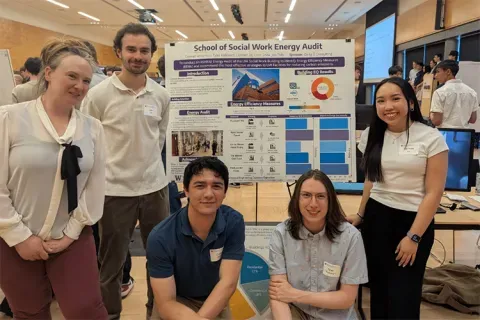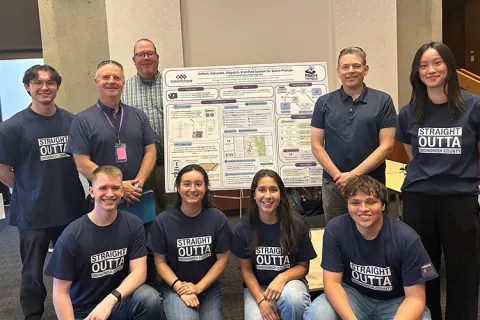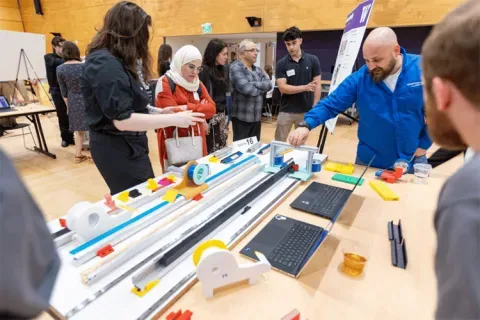Adaptable House
Overhead Mobility Full-Support System for Adaptable House
The Adaptable House Project seeks to answer problems of well-being and movement in the home of aging and physically challenged people. This student team will work to design and build a model living house for living life at maximum freedom, that would evolve with the special needs and unique challenges of each person. This student team will work to design a mobility system that would avoid the limitations of traditional wheelchair and walkers by using an overhead gantry and track system to assist the user with three different levels of support. In particular, this student team will work to design, build, and test a better "hanging chair" that is a key component of the integrated mobility system for the Adaptable House Project. The hanging seat is the interface between the user and the mobility system. The desired outcomes this student team will work to achieve are an aesthetically pleasing, inspiring, playful seating system that supports the multiple use modes and is simple/easy to use.
Faculty Adviser(s)
Renee Desing, Mechanical Engineering
Related News

Mon, 10/13/2025 | UW Mechanical Engineering
Capstone collaboration leads to award
An ME capstone team received first place for its energy audit of the UW School of Social Work building.

Thu, 07/17/2025
UW engineering students develop smart ballot solution
UW engineering students develop smart technology solution to improve ballot collection for Snohomish County.

Mon, 07/07/2025 | UW Mechanical Engineering
Capstone creations
Students displayed innovative capstone design projects at the 2025 expo.

Fri, 09/20/2024 | UW Civil & Environmental Engineering
Smarter irrigation for a greener UW
A new project combines satellite data with ground sensors to conserve water and create a more sustainable campus environment.